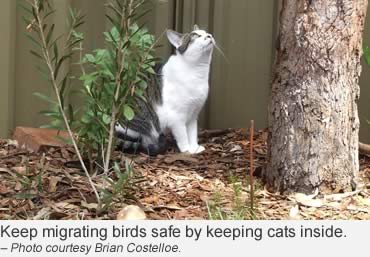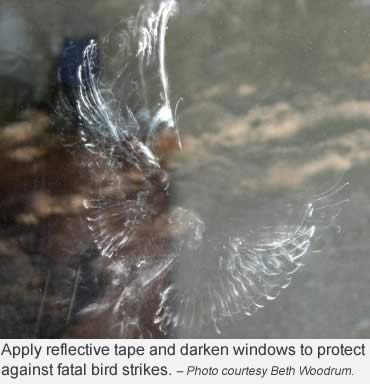Photo: Purple martins are among the earliest to arrive from their winter vacations. Photo courtesy Henry T. McLin.
Twice a year, it’s a high-in-the-sky event as temperatures warm and vast movements of birds leave their winter vacation spots and begin relocating to their breeding grounds. It starts in January and grows month by month, ending in July for some birds.
Waterfowl are in the first group, and they began migrating as soon as frozen lakes and marshes show signs of thawing. Red-winged blackbirds and killdeer are close behind along with birds of prey like bald eagles and hawks, even if winter still grips their breeding areas.
Also leading the pack are purple martins, the earliest arrivals from South America who cruise into Florida and Texas in late January. By the end of March, they’ll be in the northern states.
Large numbers of native sparrows and shorebirds move in March, arriving in Southern states through April. But the great flood of songbirds—warblers, thrushes, buntings, grosbeaks, orioles, vireos and thrushes—won’t leave their tropical locations to head north until April and May. By June, most of the spring migration has ended.
 It’s a season filled with hazards for both large and small birds.
It’s a season filled with hazards for both large and small birds.
“Spring is a deadly time for birds for three big reasons. Scientists estimate that 300 million to one billion birds die each year from collisions with buildings, many during arduous migrations in unfamiliar environments,” says Dr. George Fenwick, president of the American Bird Conservancy.
“Up to 50 million die from encounters with communication towers, and up to six million may die each day from attacks by cats left outdoors. These deaths occur year-round, but many occur during spring and fall migration.”
For backyard bird enthusiasts who want to help, there are several things that can be done immediately.
First, keep your cat indoors.
The Smithsonian Conservation Biology Institute and the U.S. Fish and Wildlife Service have found bird and mammal mortality caused by outdoor cats in the United States is much higher than widely reported. That 2013 study estimate of bird mortality far exceeds any previously estimates, and may exceed reasons migrating birds die, including collisions with windows, buildings, communication towers and vehicles, as well as pesticide poisoning.
The next easiest thing to do is to darken your windows or apply reflective bird-scare tape.
Window glass is an invisible menace to birds of all sizes. Reduce the possibility of a fatal collision by applying reflective and inexpensive tape to your windows. Window reflections confuse birds seeking open spaces, and just as humans sometimes walk into a clear glass door, birds do the same.
 Cities are more of a concern than backyards, with bird collisions with glass more frequent during the spring and fall migrations. The published results of a long term study recently found the lure of building lights disrupted birds’ natural navigation cues, cues, leading to deadly collisions. Over 21 years, the study found bird-kills would have been reduced more than 60% if only half the building’s windows were lit.
Cities are more of a concern than backyards, with bird collisions with glass more frequent during the spring and fall migrations. The published results of a long term study recently found the lure of building lights disrupted birds’ natural navigation cues, cues, leading to deadly collisions. Over 21 years, the study found bird-kills would have been reduced more than 60% if only half the building’s windows were lit.
Researchers from Cornell Lab, the University of Michigan, the Field Museum in Chicago, Colorado State University and the University of Massachusetts Amherst examined bird data from McCormick Place, a 3-story convention center in eastern Chicago from 2000 to 2020.
At the heart of the study were over 40,000 dead birds and information collected including when they were killed, which window, and what species—at the center since 1978. As a result many “lights out” initiatives are being formulated to reduce light pollution during migration times.
Another way to help: Keep all feeders and bird baths clean. Disinfecting feeders and bird baths regularly and changing water frequently will help keep birds healthy and reduce opportunity for diseases to spread.
Finally, keep yards free of pesticides and choose garden plants to encourage native insects and their larvae as an important food source to benefit both birds and other wildlife.
– Resources: National Wildlife Federation, American Bird Conservancy, Cornell Lab of Ornithology.